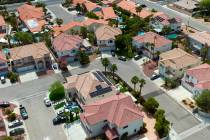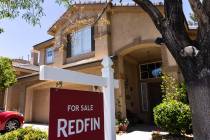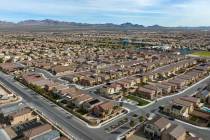Building jumps in June after slow spring
WASHINGTON — Builders broke ground on more single-family homes and apartments in June, helping the battered construction industry gain a little life after a dismal spring.
The Commerce Department said Tuesday that builders began work on a seasonally adjusted 629,000 homes last month, a 14.6 percent increase from May.
Still, that’s roughly half the 1.2 million homes per year that economists say must be built to sustain a healthy housing market. Jennifer Lee, a senior economist at BMO Capital Markets, called the gains “just a blip in the overall flat-lining trend of homebuilding activity.”
“We have to see a rebound in job creation to sustain a recovery in housing,” she said.
Much of the increase in June came from a surge in apartment construction, a volatile part of the industry. That sector jumped more than 30 percent last month.
Renting has become a preferred option for many Americans who lost jobs during the recession and were forced to leave their rapidly depreciating homes. Since 1992, apartments have typically made up just 20 percent of home construction. Now, they make up closer to 30 percent of the market.
Single-family home construction rose 9.4 percent. It was the biggest increase since June 2009, when the recession officially ended. But analysts said the pace of 453,000 homes per year was still too depressed to signal a turnaround.
“The underlying trend of single-family housing starts shows no signs of improving in a significant manner anytime soon,” said Joshua Shapiro, chief U.S. economist at MFR Inc.
Building permits, a gauge of future construction, increased 2.5 percent.
In Las Vegas, Home Builders Research reported 459 new-home building permits issued in June, up from 435 in May and an increase from 402 in June 2010.
Housing analyst Dennis Smith of Home Builders Research said he expects the Las Vegas permit count to stay around 450 through the summer and early fall.
“I don’t see any reason to expect a big change in net (new-home) sales, which translates to permits, due to the foreclosure situation,” Smith said Tuesday.
Home construction rose in every part of the country. The biggest gains in single-family home construction were in the Midwest and South, which saw extensive damage from tornadoes and flooding this spring. In the Northeast, the overall building pace spiked 35.1 percent and in the Midwest, it rose 25.3 percent. In the South, it rose 10.6 percent and in the West, it increased 5.4 percent.
Though new homes represent just 20 percent of the overall home market, they have an outsized impact on the economy. Each home built creates an average of three jobs for a year and generates about $90,000 in taxes, according to the National Association of Home Builders.
The weak housing industry is also holding back the U.S. economy. In past modern-day recessions, housing accounted for 15 to 20 percent of overall economic growth. This time around, between 2009 and 2010, housing contributed just 4 percent to the gross domestic product.
Cash-strapped builders are struggling to compete with deeply discounted foreclosures and short sales. A short sale is when lenders allow borrowers to sell their homes for less than what is owed on the mortgage.
New-home sales fell in May to a seasonally adjusted pace of 319,000 homes per year. That’s far below the 700,000 homes per year that economists consider healthy.
One reason is that previously occupied homes are a better deal than new homes. The median price of a new home is more than 30 percent higher than the median prices for a resale. That’s more than twice the markup in healthy housing markets.
Loans are also harder to get. Most private lenders require 20 percent down payments and higher credit scores for the lowest mortgage rates.
Review-Journal reporter Hubble Smith contributed to this report.


















